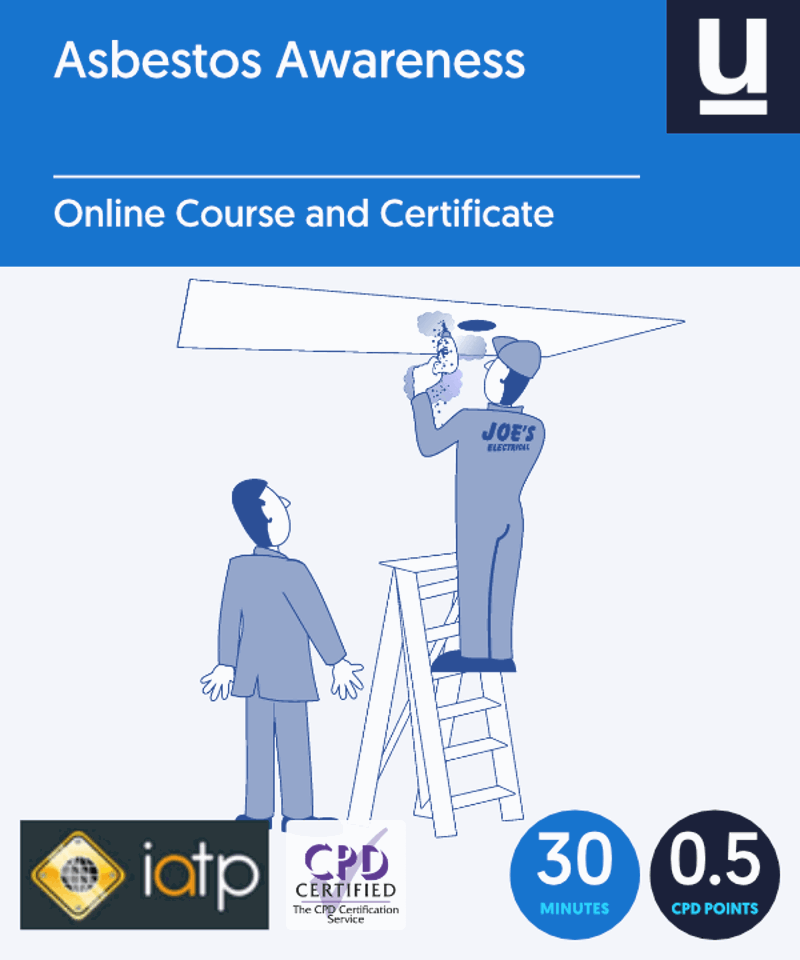- Property Owner: These are the people or groups that own the premises.
- Landlords: These are the individuals who rent out the premises for others to use.
- Maintenance Managers: These are groups or people responsible for keeping or fixing the building, as mentioned in rental agreements or contracts.
In buildings where many people live, the responsibility can be shared. This includes the owner, tenants, or managing agents. But remember, managing agents work for the owners and do not handle the legal duties themselves. If there is no rental agreement, the building owner or the person in charge of the premises will take on that duty.
To determine if you are a duty holder, check out the Work Right Campaign.
The Scope of the Managing Asbestos
The responsibility for dealing with asbestos also applies to buildings that are not homes. This includes places like factories, stores, and public buildings such as:
- Factories, warehouses, offices, and shops.
- Hospitals, schools, museums, churches, and libraries.
It also includes common areas in buildings that have many homes. This means places like entrances, hallways, stairs, and rooftops. However, the rules do not cover individual apartments and houses.
What Are the Dutyholder’s Responsibilities?
Dutyholders need to take these steps to manage asbestos safely. This helps them follow the Control of Asbestos Regulations.
- Find asbestos-containing materials (ACMs).
Check if there are ACMs in the building. Write down how much there is, where it is located, and its condition. If you are unsure, assume the materials have asbestos unless you have strong evidence that they do not.
- Keep records. Create a list that shows where ACMs or materials suspected of containing asbestos are and their condition.
- Check risks. Look into how likely asbestos fibres are to spread into the air and how people might be exposed.
- Create an asbestos management plan (AMP). Document how you will manage, watch over, and review the risks. Update this plan at least once a year or when something important changes.
- Keep an eye on ACMs. Regularly check their condition. Take action if they start to worsen.
- Share information. Inform anyone who might disturb ACMs, like workers and emergency services, about where they are and their condition.
- Provide training. Ensure that everyone involved in AMP, including contractors and maintenance crew, receives proper training.
Find Out If Asbestos Could Be Present in Your Premises
If your building was made or fixed up before 2000, you should think that asbestos might be present. Buildings from that time often have ACMs in visible areas and also in hidden places, such as inside walls, fire doors, or old machines.
How to check for ACMs:
- Check the Building Material: Look for materials that could be affected during regular use, cleaning, or maintenance. Remember to check hard-to-reach areas like wall spaces and ductwork.
- Examine Old Machines: Asbestos may also be in old factory machines. This includes things like ovens, gaskets, or electrical gear. If you are working on old machines, talk to the maker or assume that asbestos is present until you find out for sure.
- Write Down What You Find: Make a note of where you find any ACMs and what their condition is.
For renovation or teardown projects, you need a detailed survey. This survey is important to find any hidden asbestos materials before you begin the work.
Arrange an Asbestos Survey
To meet the asbestos management laws, people in charge often need to have professional asbestos surveys done. These surveys provide good information about where ACMs are located and how they are doing.
The two main types of surveys:
- Management Survey:
- This checks how to manage ACMs when the building is used regularly and during maintenance.
- It involves looking at all rooms, hallways, service ducts, ceilings, and outside areas like soffits and gutters.
- Sometimes, we need to make guesses about areas we cannot get to. These areas must be managed until we can do a full inspection.
- Refurbishment or Demolition Survey:
- The law requires this before any major work or demolition begins.
- It finds and removes ACMs from hard-to-see places with inspection methods that might cause some damage.
- This keeps workers safe and makes sure all rules about removal are followed.
How to Register and Assess the Risk
Creating and maintaining an asbestos register is very important. This register helps you track and manage the presence and condition of the ACMs in your building. It lets you know where ACMs are located so that you can handle them safely.
What to Include in Your Register:
- A list of all the known and suspected ACMs in the building.
- The type, amount, and condition of ACMs, along with the dates of inspection.
- An assessment of each ACM's chance to release fibres and the risk during everyday activities.
- Areas where asbestos may be present because they are difficult to access.
- Adding photos, drawings, and notes about condition monitoring and finished tasks can make the register better.
- The register should be checked and changed at least once a year.
- It should be updated sooner if there are major changes in risk or the state of ACM.
You can find an Asbestos Register Template, here.
Producing a UK Asbestos Risk Assessment
The asbestos register needs to include a risk assessment that considers the risk of exposure and the identification of the presence of asbestos. This assessment will help us decide what actions to take for the ACMs and may include additional information relevant to effective risk management.
- Where ACMs are located, how many there are, and their condition.
- How accessible ACMs are and how near they are to those who use the building or perform maintenance.
- The likelihood of disrupting ACMs due to planned projects, such as renovations.
Risk assessments involve two parts: material assessments and priority assessments. Material assessments check how likely it is for fibres to be released. Priority assessments see how likely it is that there will be a disturbance. Together, these assessments give a risk score. This score helps decide which actions to take for many ACMs.
Updating the Register:
- Check often to see how ACM is performing and update risk assessments as needed.
- Update records after you remove, repair, or test ACM.
- Change the register to reflect any updates in building use or planned maintenance that might affect ACM risks.
Putting Your Plan into Action
When you have your asbestos management plan finished, it's very important to stick to it carefully. This means:
- Managing Asbestos Left in Place: If ACMs are in good condition and will stay put:
- Add them to your asbestos register.
- Check their condition often to ensure they are safe.
- Inform all relevant people, like maintenance workers and contractors, where the ACMs are to prevent accidents.
- Repairing or removing damaged asbestos:
- If ACMs are damaged, think about sealing, enclosing, or removing them.
- Hire trained and skilled professionals for any repair or removal work.
- Use licensed contractors for high-risk jobs like insulation or sprayed coatings.
- Determining licencing requirements: Decide if the work is:
- Licensable: this needs HSE notification and licensed contractors.
- Notifiable Non-Licensed Work: This comes with extra responsibilities for employers.
- Non-Licensed Work: This can be done by trained contractors without any need for notification.
Sharing Your Plan
Communicating your asbestos management plan is crucial for safety. You need to share your plan with:
- Site or Building Managers: Make sure the plan is easy to find on-site. Help everyone understand their jobs clearly.
- Workers and contractors: Share clear details about where ACMs are found, their state, and how to stay safe while working. Make sure they can access the asbestos register and follow all safety rules.
- Other Building Occupants: Inform teachers or office staff about ACMs in the areas they use. Provide instructions on what to do if something gets disturbed by chance.
- Emergency Services: Give them details about where current ACMs are and their condition to help them respond safely.
Final Thoughts
Effective asbestos safety management is key to keeping people safe in a building. By following the right steps and attending appropriate training, duty holders can meet their legal duties and reduce the risks of exposure. It's important to check regularly, communicate clearly, and follow the regulations. This practice helps ensure buildings are safe and meet the rules. Put safety first today to save lives and prevent dangers in the future.
If you are a duty holder and would like to learn more, see our Asbestos Awareness Training Course below:



